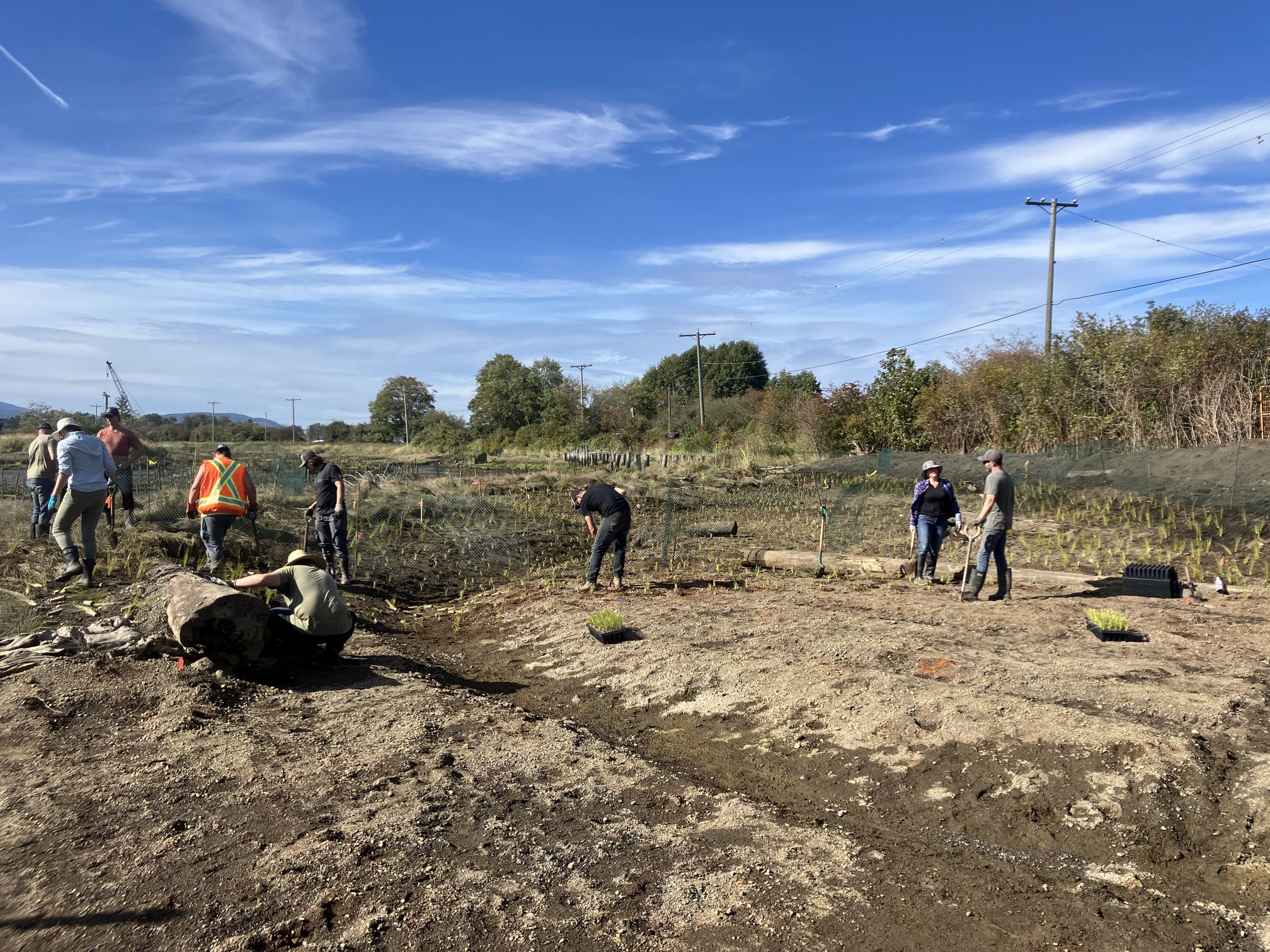Greenshores at Dyke Road Park – Reimagining a Park
Eartworks at Dyke Road Park ~ C Holbrook
Planting saltmarsh ~ J Baker-French
New saltmarsh plants ~ Casey Doucet
On September 20 and 21, over 20 people were on site to help with planting at the Comox Valley Regional District’s (CVRD) Dyke Road Park redevelopment project. Over the two days, staff from CVRD, K’ómoks First Nation Guardians, Project Watershed, Guardians of Our Salish Estuaries Society, and Pacific Salmon Foundation along with many community volunteers planted 10,000 intertidal plants into newly restored tidal marsh benches and channels constructed within the park. Critical rearing habitat for juvenile salmon has made some big gains with this project, which is designed along the same lines as Project Watershed’s flagship project, Kus-kus-sum, located just upstream from Dyke Road Park.
The Dyke Road Park project is a demonstration of Greenshores principles applied to a municipal park. Greenshores is a program similar to the LEED green building program that allows property owners to gain “points” for inclusion of beneficial practices and features in foreshore development plans. The goal of the program is to return natural ecosystem function and form to our shorelines, allowing infrastructure and nature to coexist together. Many years in the making, the Dyke Road Park redevelopment idea expanded from a seismic upgrade to the Rotary bird viewing platform to encompass restoration of ecosystem processes and habitat features as the result of CVRD’s collaboration with the stewardship community.
Phase 2 of the park redevelopment will focus on community access and even more restoration of natural features of the park. There will be a boardwalk extending out over the newly restored tidal marsh, ending in a new bird viewing platform with a great view of the broader K’omoks Estuary. Work on Phase 2 is planned to begin this fall and be complete early in 2025.
More planting of the upland sections of newly restored natural areas will be needed – keep your eyes out for volunteer opportunities!
Information for post provided by:

Jay Baker-French
Project Watershed Assistant Program Coordinator





